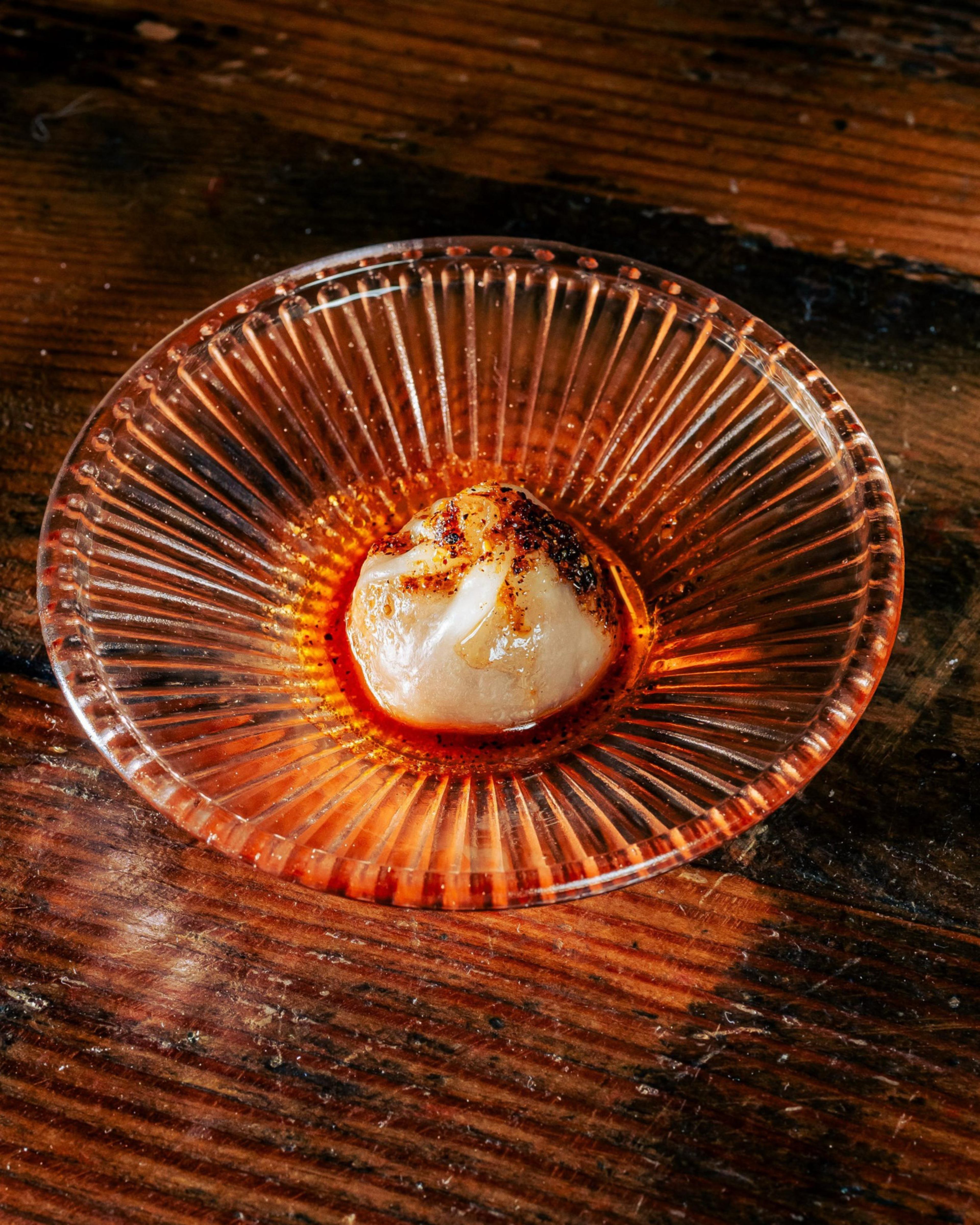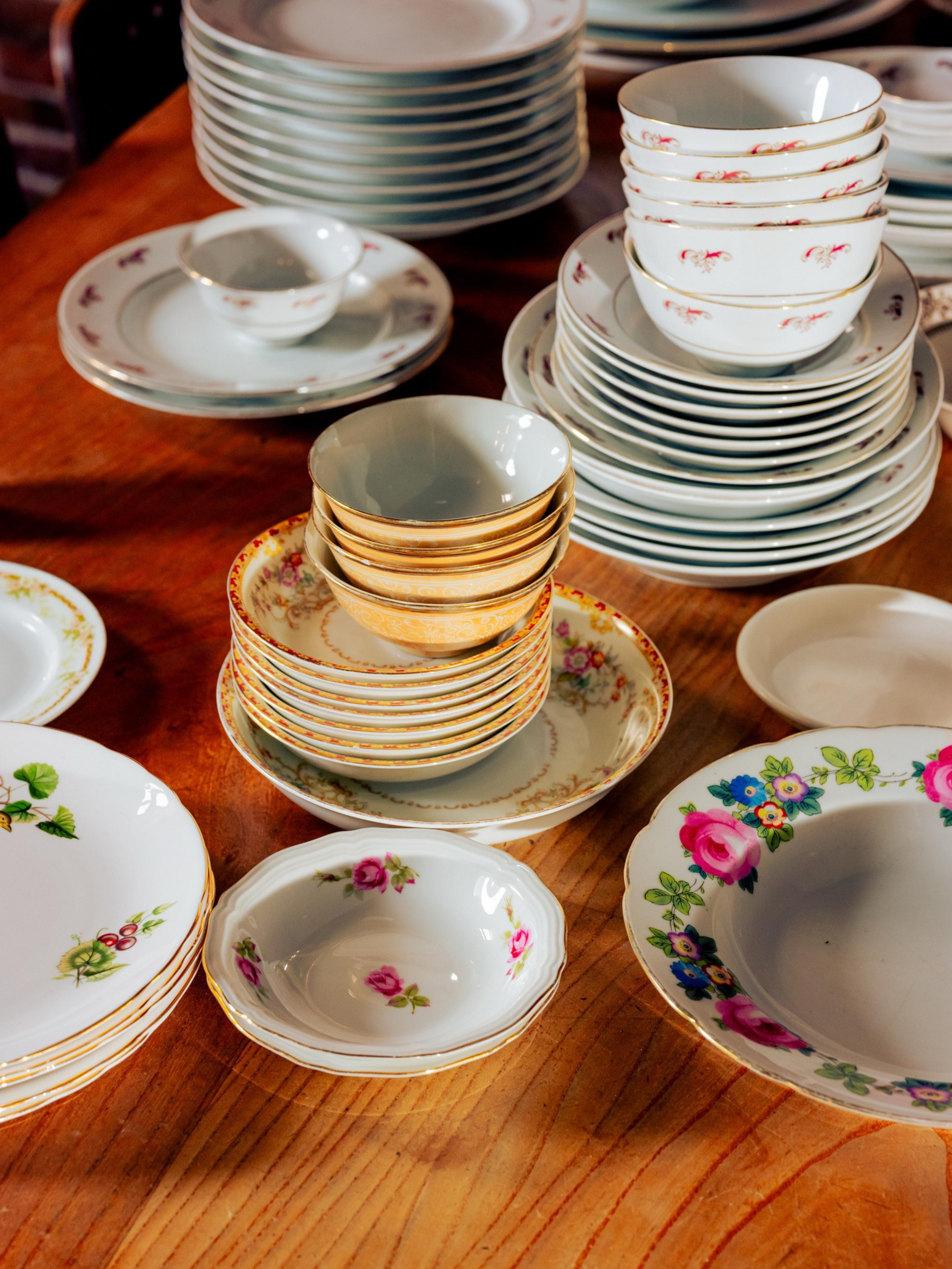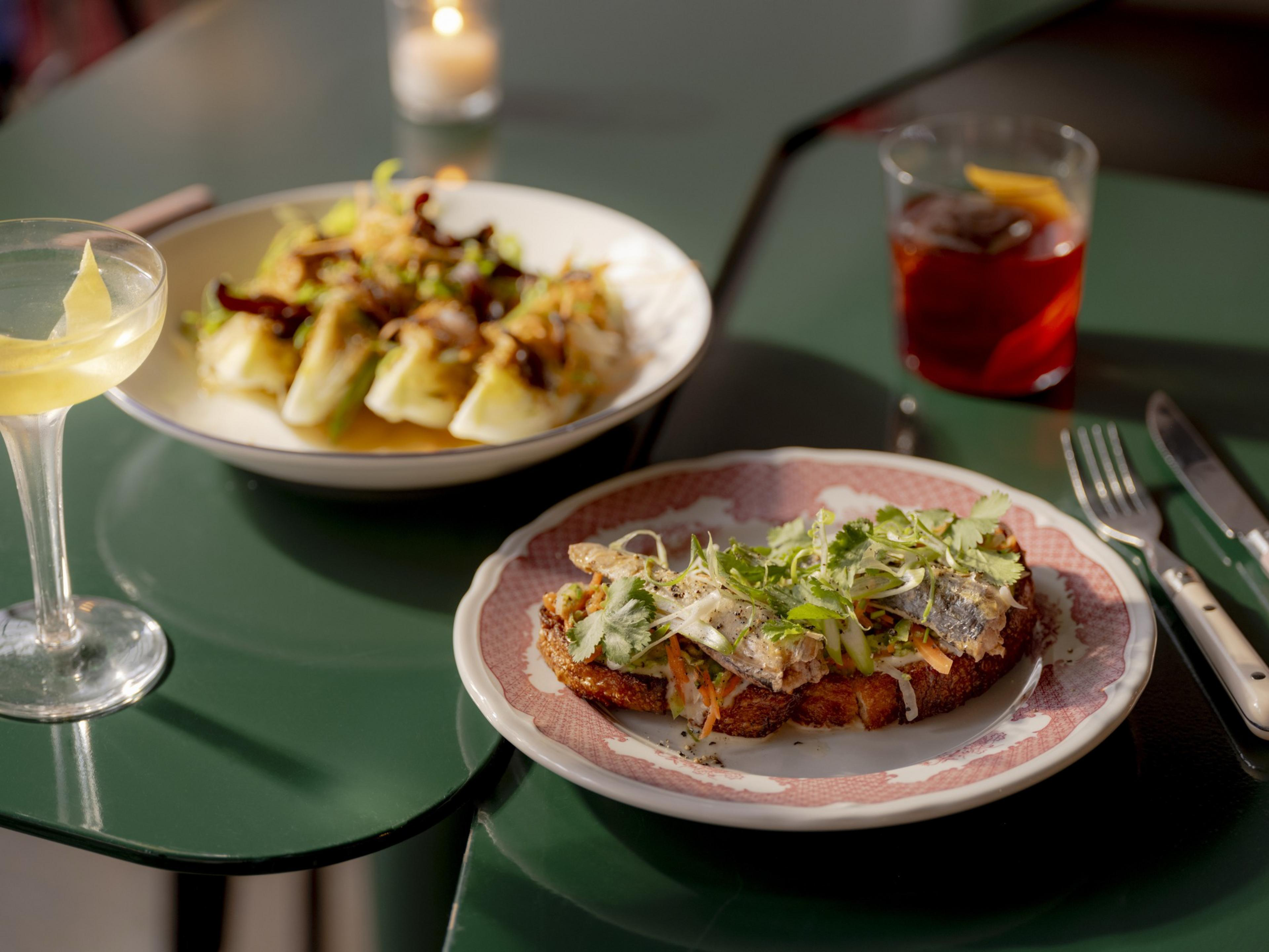When I called Bodhi Freedom to inquire about his longtime obsession with vintage plateware, he was just pulling up to the Salvation Army on Valencia Street. This was not a coincidence. The owner of the Mission district wine bar and restaurant 20 Spot has an addiction. “I’m thrifting a few times a week,” Freedom said before taking a beat to look within. “OK, I’m lying — it’s almost every day.”
Since opening in 2013, 20 Spot has been at the forefront of the “grandmacore (opens in new tab)” trend — an aesthetic driven by a growing penchant for mismatched vintage plates and glassware. (And it’s not just in San Francisco. When I was in Mexico City in the spring, the hipper the restaurant and the louder the music, the more likely I was to be served tacos al pastor on a plate with a scalloped edge and flowers.)



Freedom’s collection, which has expanded into his home garage, is what he calls “hot mid-’50s,” an aesthetic built around the likes of Electra (opens in new tab), a housewife-chic label from Japan, often with graphic daisies and starbursts in a midcentury palette dominated by avocado and mustard.
Of course, this isn’t the first time restaurateurs have gone estate sale. Chef Cory Obenour, who opened Blue Plate in Bernal Heights in 1999, said he thrifted everything for the first two years of his restaurant’s life. “We loved it. But we had oval plates, round plates, flat plates, and they wouldn’t stack, so once we started doing more business, we had to go from fashionable to functional,” he said. What do they use now? “Heath-y kind of plates. But not as expensive.”
When I called him, Obenour had just come back from Majka in Sacramento, which was recently added to the Michelin Guide. “It reminded me of Blue Plate back in the day,” he said. “Everything they’re using is grandma china and mismatched.”
Though grandmacore is a throwback, it also marks a sea change. Starting around 2003, when Heath relaunched as a design-savvy brand, clay stoneware developed a stronghold on the Bay Area restaurant scene. Setting out Heath tableware — or custom-made earthenware from local artists like MaryMar Keenan of MMClay and Erin Hupp, if you wanted to be even fancier — became a humblebrag for restaurants: a signifier of expensive, but lowkey, taste.
For two decades, all of San Francisco’s middle-aged cool kids — Delfina, A16, Zuni Cafe — have served food on chunky plates in muted earth tones with unglazed edges. And, of course, when it opened in the same building as the new Heath studio in 2016, Tartine Manufactury joined the ceramic dishware club.

But things are changing. “Heath and those kinds of ceramics are just so played out,” Freedom said. “Plus, they’ve been for the fancy bitches — the Stuart Briozas of the restaurant world,” he laughed, speaking of the State Bird Provisions chef, whose other restaurant, The Progress, has famously collaborated with MMClay, which makes beautiful but spendy pieces. One dinner plate will set you back $69 at retail. “I actually love Marymar’s ceramics,” Freedom notes. “But they’re so heavy!”
At Friends and Family, an uptown Oakland cocktail bar and restaurant, owner Blake Cole said the decision to go with eclectic vintage was first and foremost a financial one: “The thing about buying vintage plateware is it’s affordable.”
On Friends and Family’s Instagram page, a shallow, lacy, gold-rimmed bowl decorated with delicate pink and blue flowers cradles a dish of ricotta toast with English peas and strawberries. A bay shrimp salad with soy-milk aioli, green beans, and transparent slices of purple daikon is served on a “Sunday best” kind of plate with a flourished, lacy pattern in eggshell blue. Call it Victorian revival. Cole even sources the bar’s glassware from vintage shops. “When you pick a cute glass for a guest, it’s really sweet,” she said. “It elicits a reaction before they taste anything.”

Andres Giraldo Florez, the chef-owner of Snail Bar, another wine bar and restaurant in Oakland, leaned into the porcelain because it’s what he grew up with in Colombia: “I’m a third-generation cook. My grandma would use really beautiful plates when we came over for dinner.” He’s found “really crazy gems” on Facebook Marketplace. “You get to meet the people selling them,” he said. “They’ve had these plates in their family forever, so it’s super cool.”
Florez, who started as a fine-dining chef and travels to Europe to do pop-ups, lugs back plateware from the south of France. “I pack in a suitcase, and sometimes there are casualties.” But no matter, because he has learned the Japanese art of kintsugi, using gold leaf to repair broken ceramics. “I have a little setup at home.”

Though funky-cool, lower-volume wine bars seem to be at the core of grandmacore, there are a handful of fully realized restaurants that have embraced it too. Burdell in Oakland plates its famous reimagined fried chicken and waffles, which comes with chicken liver mousse, on vintage Corelle plates in the “Butterfly Gold” pattern. Angler, the fine-dining restaurant on the Embarcadero, on occasion dips into a little gold-leaf rim and floral.
And while The Morris in San Francisco launched using Heath, then switched to MMClay, the owners’ new restaurant, Sirene, which opened in January in Oakland, has gone all-in on salvaged. “When we opened, I’d already been collecting glassware with the idea — etched martini glasses and coupes and stuff like that,” said chef-owner Gavin Schmidt. “We do a lamb-and-uni dumpling, and I found some pink glass, Art Deco-y cups that look cool because you can see the broth.”
Schmidt shops mostly at Berkeley’s Urban Ore and the monthly Alameda and Marin flea markets. The fact that about 75% of Sirene’s plateware is vintage means that the cooks aren’t always clear on which plate to use for each dish, which can cause a bit of creative paralysis. “I tell them to just put it on whatever looks cool,” Schmidt said.
He even has his general manager helping build out the collection. “There was a 150-piece set for like $120 that he found one day. He was texting me like, ‘Dude, check this out.’ And I was like, ‘Buy that now.’”
